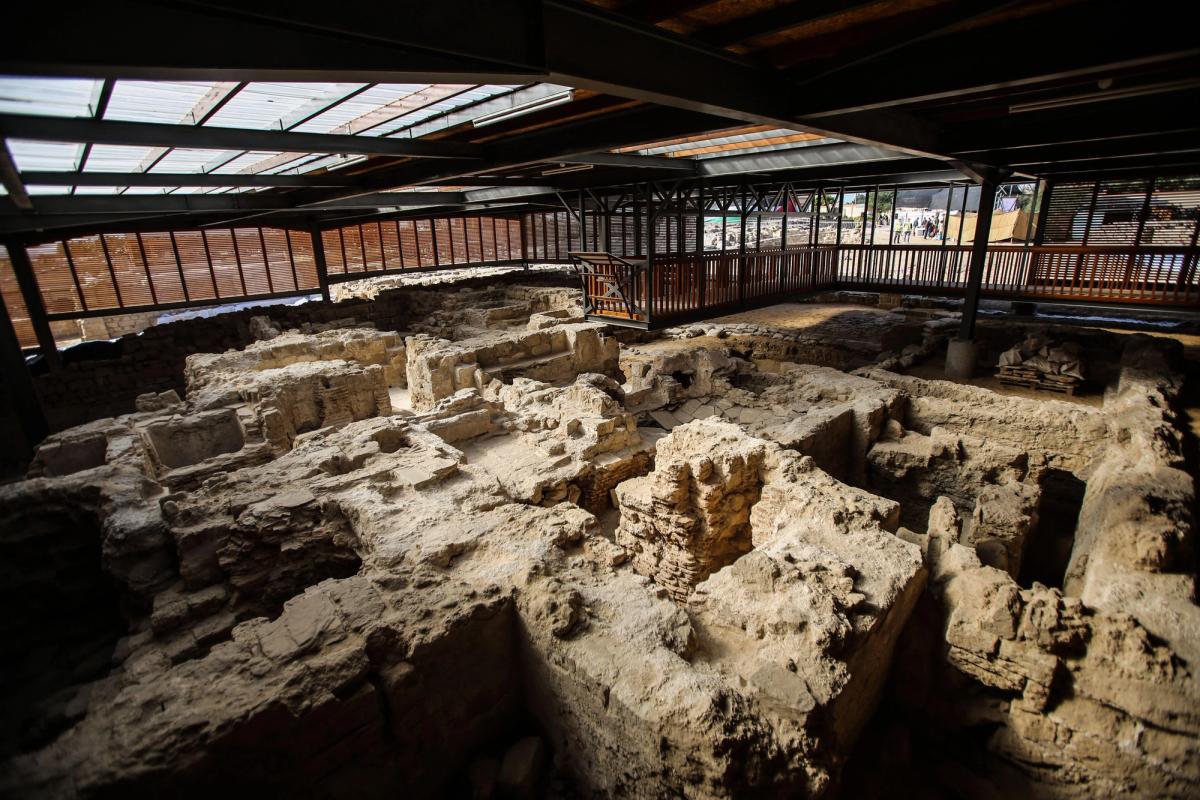Unesco has granted provisional enhanced protection to Saint Hilarion Monastery in the Gaza Strip following reports that it has sustained damage during the ongoing Israel-Hamas war.
The ruins of Saint Hilarion Monastery are part of Tell Umm Amer, a site which has been on Unesco’s Tentative Heritage List since 2012. It is located in the coastal village of Al Nusairat, around 8.5km south of Gaza City, and is one of the oldest and largest monasteries with substantial remains in the Middle East.
The Permanent Delegation of the State of Palestine to Unesco submitted the request for the protection of the site, which is under the direct supervision of the Palestinian Authority’s ministry of tourism and antiquities.
“We don’t know if the monument itself is damaged but we know its surrounding areas, such as the roads to the site, are affected,” Jehad Yasin, the ministry’s general director of excavations and museums, tells The Art Newspaper.
Yasin says it is important to protect the entire area, including its buffer zone, because much of it has not yet been excavated and it is likely that other undiscovered archaeological features are present.
Due to the impossibility of assessing the damage on site, Unesco experts have been monitoring the situation remotely “using satellite data and information transmitted by third parties”, a Unesco spokesperson says. “Unesco is particularly concerned about the situation of the ruins of Saint Hilarion.”
At a meeting on 14 December, Unesco’s Committee for the Protection of Cultural Property in the Event of Armed Conflict decided to grant provisional enhanced protection to Saint Hilarion—the highest level of immunity against attacks established by the 1954 Hague Convention and its Second Protocol.
The Hague Convention for the Protection of Cultural Property in the Event of Armed Conflict, a multilateral treaty ratified by both Israel and Palestine, aims to protect cultural property and sets sanctions for those who breach the convention. The convention’s Second Protocol, adopted in 1999, created a new category of “enhanced protection” for cultural property and established criminal sanctions for violators of the protocol.
Yasin says he hopes Unesco’s decision will lead to the protection of other heritage sites in Gaza that have been heavily impacted during the war. “I think it is a step towards eyeing the attention to our cultural heritage. It is not just about the Saint Hilarion, maybe it can open eyes on all the cultural heritage in Gaza,” he says. This includes, he says, Wadi Gaza Coastal Wetlands and Anthedon Harbour, the other two sites in Gaza that are currently on Unesco’s Tentative World Heritage List. The harbour, Gaza’s first known seaport, inhabited from 800BC to AD1100, has been completely destroyed, he says.
More than 18,500 Gazans have been killed—many of them women and children—since Israel launched its assault on 7 October, according to the Hamas-run health ministry in Gaza. This assault followed, on 7 October, Hamas terrorists killing more than 1,200 people in Israel and taking more than 240 people hostage.
A UN assessment states that more than 40,000 buildings have been damaged or destroyed in the Gaza Strip since the war broke out, including sites tied to the legacies of numerous civilisations, such as the Ancient Egyptians (early 15th century BC), the Philistine era (12th century BC), and the Romans (63BC). In November, The Art Newspaper reported the extent of the damage inflicted upon Gaza’s invaluable heritage sites.
Yasin explains that information and co-ordinates for numerous cultural sites are being shared with Unesco for subsequent transmission to Israel to try to protect them. “We are trying to protect all our cultural heritage and to keep [it] safe, because this is not only our cultural heritage, it is [also] humanity’s cultural heritage,” he says.
The Saint Hilarion Monastry served as an important station on the crossroads between Egypt, Palestine, Syria and Mesopotamia. Its site consists of two churches, a burial site, a baptism hall, a public cemetery, an audience hall and dining rooms.
Its earliest building, dating to the fourth century, is attributed to Saint Hilarion, a native of the Gaza region and the father of Palestinian monasticism. The monastery was destroyed and abandoned in 614 by an earthquake and was uncovered by local archaeologists in 1999.
In recent years conservation projects funded by Aliph, the international alliance for the protection of heritage in conflict areas, and the British Council aimed to safeguard Saint Hilarion. It is unclear at this stage how much of their achievements has been lost.


